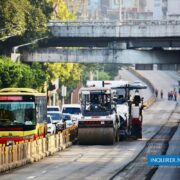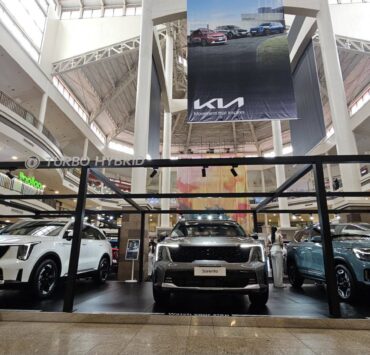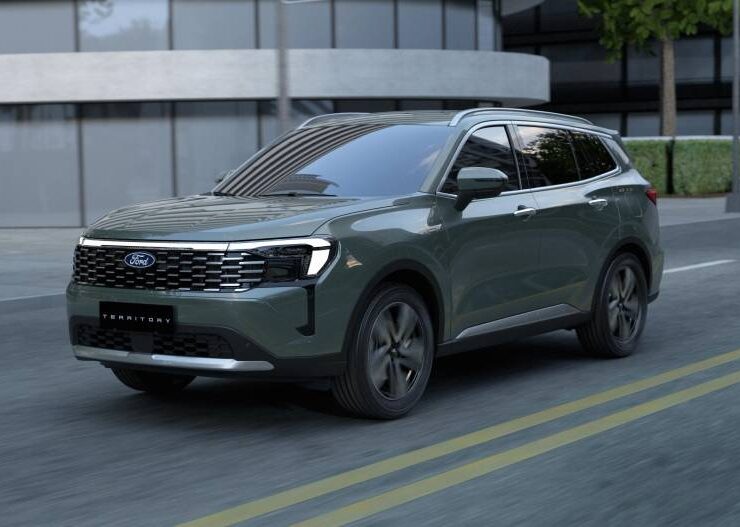BOHOL-ISTIC DRIVE

Travel is therapeutic. Letting all your five senses take in the experience of the open road—meeting people, seeing, touching, and/or tasting new things—somehow re-energizes and refreshes you inside and out.
Late last year was especially difficult for me and my family, as we had to deal with my mom’s worsening health condition (she eventually passed away in December). My Sydney-based nephew Arvy and niece Ann paid a visit to their ailing lola in November. Their dad—my brother—suggested that I take Ann (along with her friend Tedi) on a tour to Bohol for her to also pay a visit to cousins, uncles, aunts, and grand-aunts from her lola’s side. It was also then that I thought that it would also be a good time for her to see the province’s natural attractions.
I had been to Bohol many times before, but it would be Ann and Tedi’s first. So, I carefully laid out a tour plan that would maximize our four-day stay in the island province.
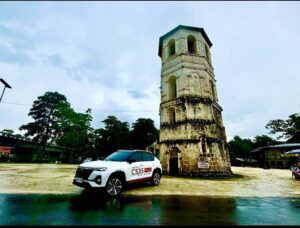
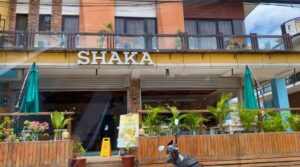
Of course, in between the courtesy calls to our Bohol relatives in Tagbilaran City were the “must-visit” places: the world-famous Chocolate Hills, the Philippine Tarsier Sanctuary, and the Loboc River Cruise.
Ann and Tedi were, thankfully, open to trying out new culinary things, so it was a great chance to introduce them to the wonderful and tasty array of vegan and plant-based cuisine Bohol’s tourist hotspots had to offer.
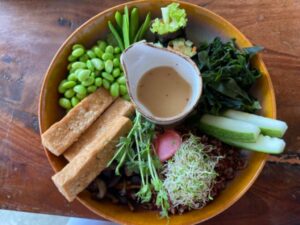

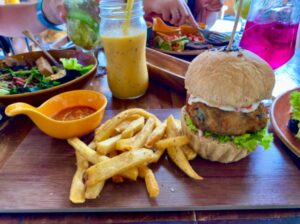
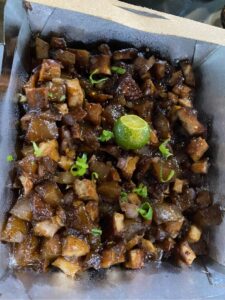
Tagbilaran City was where Veganize Bohol was located. At the time, the place was being renovated, so we just had to order for takeout. It was in Panglao Island—along or near the tourist hangouts—where most of Bohol’s vegan restaurants were situated: The Vegan Shack, Shaka and Vedge Bohol. Generally, the dishes from these vegan places were tasty and filling, and prepared in a variety of ways (Filipino, European, Mediterranean, Chinese, Thai, etc, reflecting the wide-ranging preferences of foreign tourists) and Ann and Tedi gave their thumbs-up.
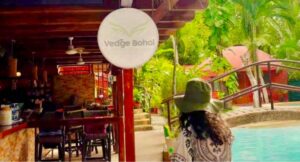

For our transport needs, my relatives in Tagbilaran offered their Mitsubishi Strada pickup. The Changan Auto dealership in Tagbilaran also offered its CS55 Plus and CS35 Plus compact SUVs for us to take to our destinations. And who were we to refuse such two good offers?
At the Chocolate Hills in the town of Carmen, we had to temporarily let go of the creature comforts of the Changan SUVs and hop on the rough-and-tumble four-wheel all-terrain vehicles (ATVs) to traverse the off-road and muddy trails weaving around the hills—unique geological formations that have been included in Unesco World Heritage Convention. I just wish that these noisy, gas-powered ATVs were electric-powered instead, so we could have our bodies rattled and muddied in utmost quiet and zero tailpipe emissions.
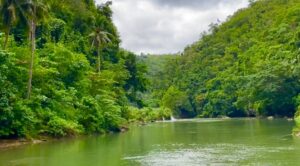
The Loboc River Cruise, in comparison, provided a far more serene ride onboard floating restaurants that meandered up and down the Loboc (also called Loay) River. It was good to see that the river retained its pristine green waters despite the growth of human habitation and activities along its banks. Ann and I were brave enough to try the tinikling dance along one stop. Those bamboo poles snapping open and shut in rhythm with the music sure hurt many rusty legs—mine included.
What could top the serenity of a slow-moving cruise in a calm river? A short hike inside the 134-hectare Philippine Tarsier and Wildlife Sanctuary, that’s what. The sanctuary is a project of the Philippine Tarsier Foundation Inc. (PTFI) and is located in Canapnapan, Corella, a 45-minute drive from Panglao. PTFI is a non-stock, non-profit organization established in 1996 to find ways to conserve, as well as to promote the tarsier of Bohol. In 1997, with the signing of the MOA between DENR and PTFI the Tarsier Conservation Program was created.
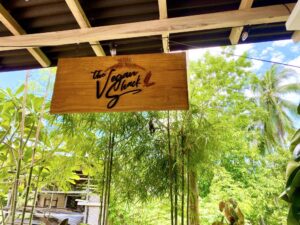
Tarsiers, among the world’s smallest primates, are nocturnal, which means they sleep during the day. So, visitors to the forested sanctuary who intend to catch a glimpse of the slumbering tarsiers are advised to be absolutely quiet, and to turn off their camera flash when they walk out on the paths.
I probably took my longest walk of the Bohol trip inside the sanctuary, since we had a tight four-day schedule and the destinations in the province were quite some distance from one another, requiring us to be in the vehicles most of the time.
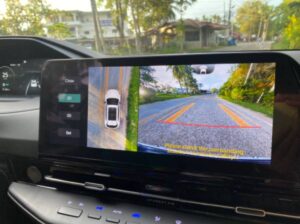
What sets Bohol apart are the island’s rich natural attractions. While some provinces highlight their annual festivals as main tourist draws, Bohol arguably offers more natural attractions relative to its size. If you look at the Philippine map, the circular island province of Bohol isn’t that large, but there are natural wonders practically everywhere. The three places we went to were just a small sample of them.
That’s also why Bohol is such a special place for science tourism, too. In fact, a couple of years ago, the Department of Science and Technology described the province as the right place to learn science for students, and the youth in general. It was here that DOST held its Climate Science Youth Camp for scientists, researchers, teachers and students. Here, nature is the teacher, and we’re all given the chance to learn first-hand how nature keeps everything in balance yet evolving, given the right amount of time.
Nature was teaching me something valuable, as well, on this trip. When you feel your world is crashing down on you, turn to nature, and it’ll show you how time can be your greatest ally as you roll with life’s most telling blows.











